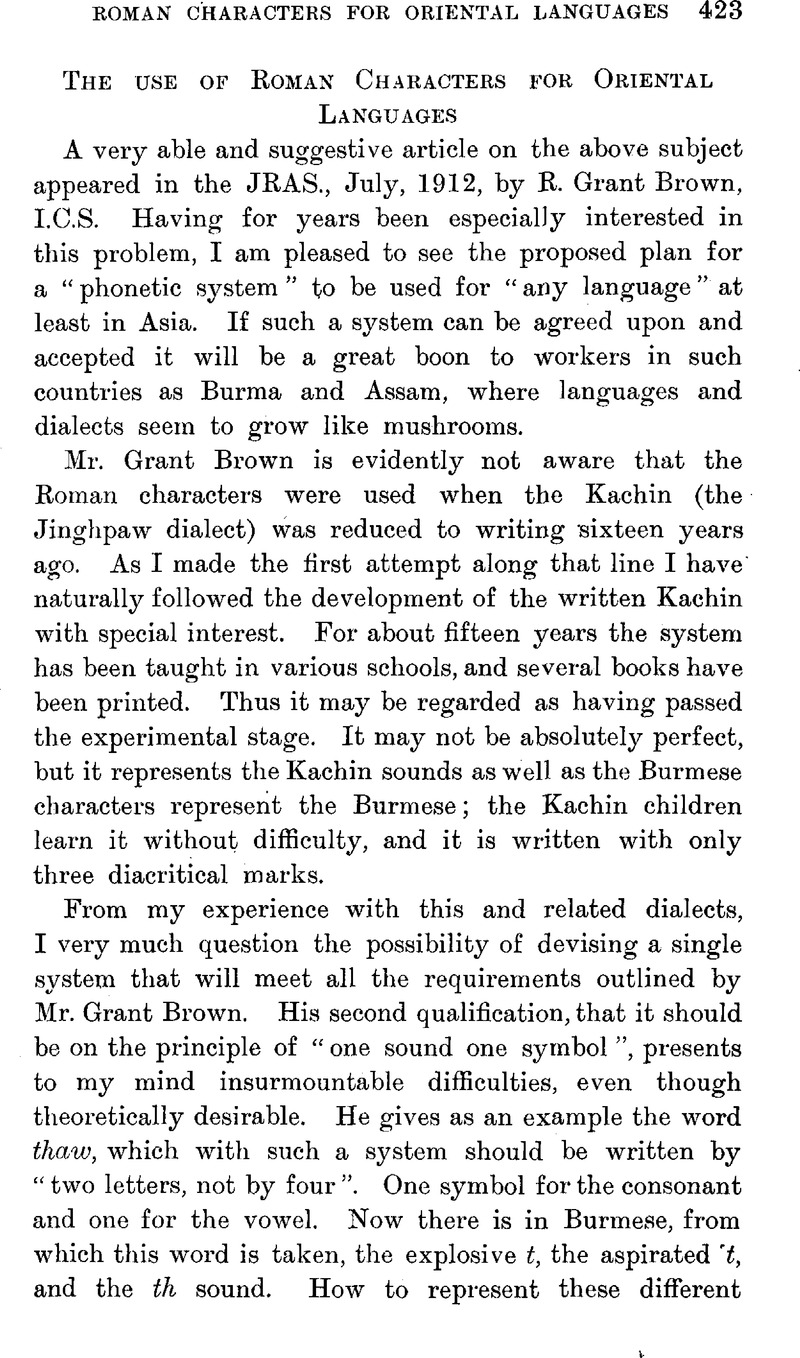No CrossRef data available.
Published online by Cambridge University Press: 15 March 2011

page 423 note 1 Transliteration and pronunciation of vernacular terms—
Vowels: a as in “father”; ă, short and somewhat suppressed sound of a; e as in “ten”; ē as a in “ale”; as in “machine”; u as oo in “moon”; ai as in “aisle”; au as ow in “cow”; aw as in “law”; and oi as in “oil”.
Consonants: all of them as in English, with the exception of chy, the nearest equivalent of which is our ch; g is always hard; hk, hp, and ht represent the aspirated forms of the explosives k, p, and t. Thus, such words as Jinghpaw are pronounced as Jing-hpaw, never as Jingh-paw.